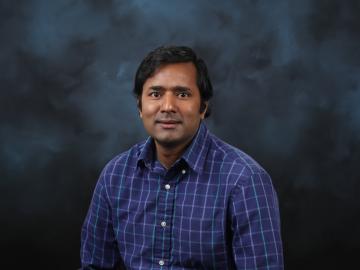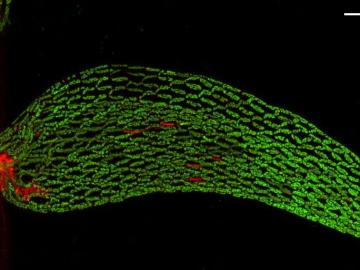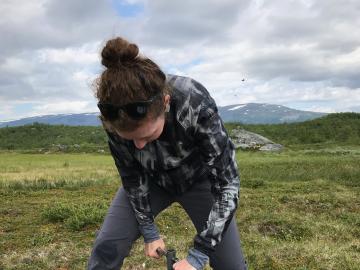
Filter News
Area of Research
- Advanced Manufacturing (1)
- Biology and Environment (84)
- Biology and Soft Matter (1)
- Computational Engineering (1)
- Computer Science (1)
- Electricity and Smart Grid (1)
- Energy Science (51)
- Functional Materials for Energy (1)
- Fusion and Fission (3)
- Isotopes (21)
- Materials (38)
- Materials for Computing (1)
- Mathematics (1)
- National Security (16)
- Neutron Science (10)
- Nuclear Science and Technology (6)
- Quantum information Science (1)
- Supercomputing (28)
News Type
News Topics
- (-) Clean Water (30)
- (-) Cybersecurity (23)
- (-) Environment (178)
- (-) Isotopes (46)
- (-) Physics (44)
- 3-D Printing/Advanced Manufacturing (106)
- Advanced Reactors (30)
- Artificial Intelligence (100)
- Big Data (66)
- Bioenergy (90)
- Biology (106)
- Biomedical (57)
- Biotechnology (28)
- Buildings (57)
- Chemical Sciences (59)
- Composites (25)
- Computer Science (169)
- Coronavirus (34)
- Critical Materials (18)
- Education (2)
- Emergency (4)
- Energy Storage (79)
- Exascale Computing (54)
- Fossil Energy (7)
- Frontier (48)
- Fusion (56)
- Grid (57)
- High-Performance Computing (104)
- Hydropower (12)
- Irradiation (3)
- ITER (8)
- Machine Learning (53)
- Materials (118)
- Materials Science (109)
- Mathematics (11)
- Mercury (10)
- Microelectronics (3)
- Microscopy (42)
- Molten Salt (8)
- Nanotechnology (41)
- National Security (70)
- Neutron Science (122)
- Nuclear Energy (98)
- Partnerships (43)
- Polymers (23)
- Quantum Computing (41)
- Quantum Science (62)
- Security (20)
- Simulation (55)
- Software (1)
- Space Exploration (24)
- Statistics (3)
- Summit (50)
- Transportation (77)
Media Contacts

Jitendra Kumar, a researcher at the Department of Energy’s Oak Ridge National Laboratory, has been elevated to the grade of senior member of the Institute of Electrical and Electronics Engineers (IEEE).

Each year, approximately 6 billion gallons of fuel are wasted as vehicles wait at stop lights or sit in dense traffic with engines idling, according to US Department of Energy estimates.

A novel approach developed by scientists at ORNL can scan massive datasets of large-scale satellite images to more accurately map infrastructure – such as buildings and roads – in hours versus days.

Scientists at have experimentally demonstrated a novel cryogenic, or low temperature, memory cell circuit design based on coupled arrays of Josephson junctions, a technology that may be faster and more energy efficient than existing memory devices.
Ancient Greeks imagined that everything in the natural world came from their goddess Physis; her name is the source of the word physics.

Illustration of the optimized zeolite catalyst, or NbAlS-1, which enables a highly efficient chemical reaction to create butene, a renewable source of energy, without expending high amounts of energy for the conversion. Credit: Jill Hemman, Oak Ridge National Laboratory/U.S. Dept. of Energy

While Tsouris’ water research is diverse in scope, its fundamentals are based on basic science principles that remain largely unchanged, particularly in a mature field like chemical engineering.

Students often participate in internships and receive formal training in their chosen career fields during college, but some pursue professional development opportunities even earlier.

A team of scientists found that critical interactions between microbes and peat moss break down under warming temperatures, impacting moss health and ultimately carbon stored in soil.

Elizabeth Herndon believes in going the distance whether she is preparing to compete in the 2020 Olympic marathon trials or examining how metals move through the environment as a geochemist at the Department of Energy’s Oak Ridge National Laboratory.


